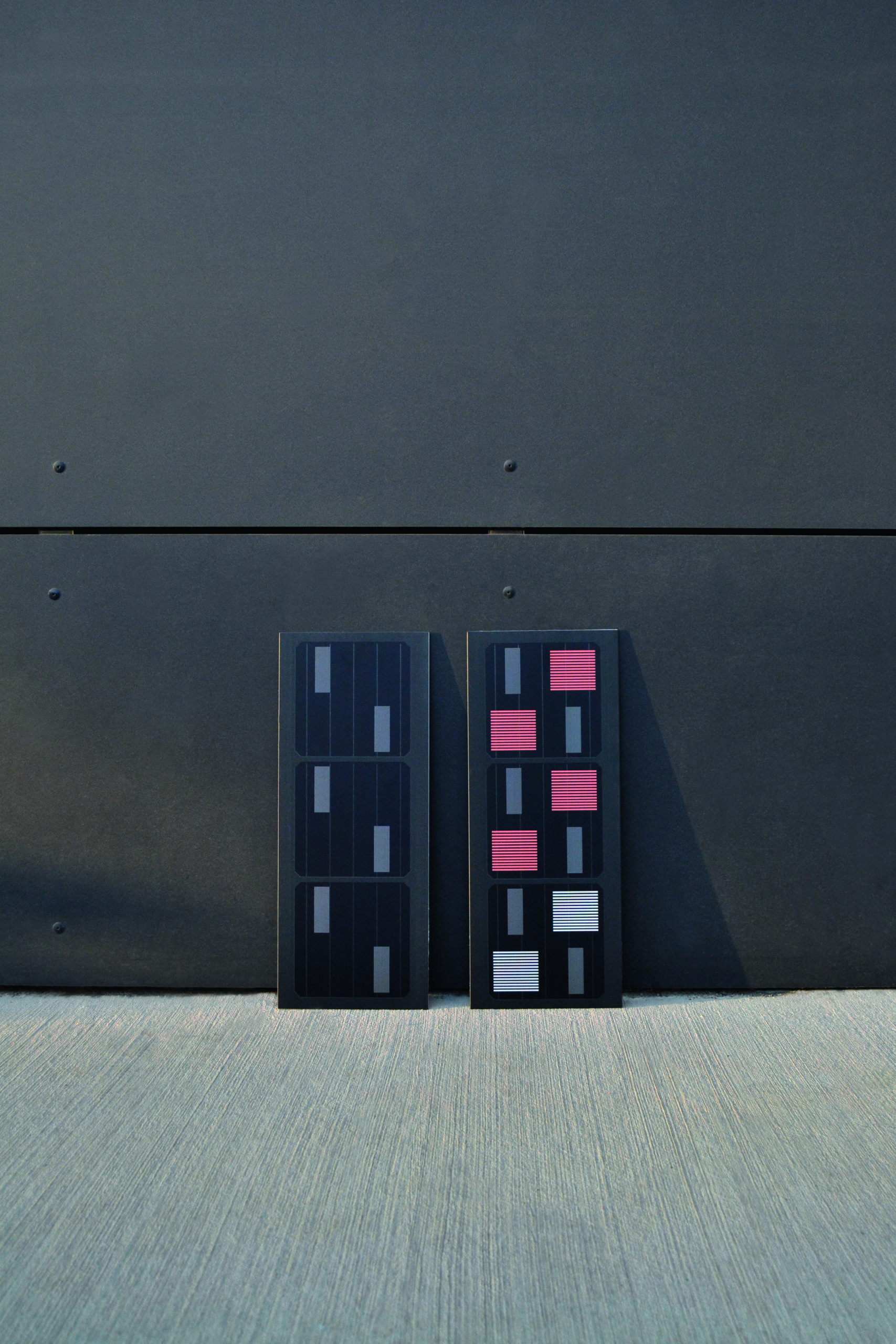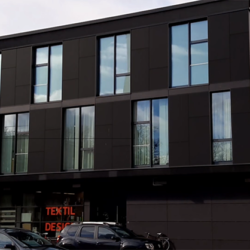Reflex
Description
The sun is a high-functioning and ever-present energy source. At the same time, it is hard to grasp. Light is volatile and conventional solar cells do not give intuitive feedback indicating their activity. To make the vast power of the sun more accessible, “Reflex” enables silicon solar cells to give visual feedback. A photochromic layer applied to the front of the cells changes its colour under the influence of UV-light and thus communicates when the cells are actively converting energy. Additionally, the pattern and colour of the photochromic layer lift the cells up to be design elements themselves – solar elements that can be integrated into every building.What is the Topic?
I have been working on the topic of photovoltaics. Here I quickly focused on the most efficient solar cells, silicon solar cells, and chose the communication of precisely this efficiency as my central problem. Contrary to public opinion, photovoltaics have long since ceased to be a new technology - solar energy has been on the market for over 60 years. But in all this time, with boosts through subsidies and after intensive research and development, solar energy has still not become a given. In order to help achieve just this, I have made solar cells both more accessible and tangible, as well as designable.
Why does it look like this?
“Reflex" is an individually applicable concept, which I have worked out exemplarily on a building on the campus of the Burg Giebichenstein Art Academy. Among other things, I made this choice because, surprisingly, no solar energy is used on our entire campus. I chose a newer building whose prominent south-facing facade would allow solar cells to be easily integrated. In designing the pattern, I took into account the existing impulses of the facade and tried to integrate the cells into the visual appearance of the building in the best possible way.
What is special?
"Reflex" uses simple means to generate visual feedback that makes the solar cells more approachable, easier to understand and more individualized. Comparable to wind energy, in which wind turbines rotate when the systems actively convert energy, "Reflex" enables a change of colour when the cells actively convert energy. This feedback is independent and does not have to be powered by the energy generated.
What is new?
Up until now, solar cells have always looked technical and unapproachable. While there are some less efficient new types of solar cells that offer different colours, shapes and even flexibility, the silicon solar cell remains the most efficient of its kind. It is therefore all the more astonishing that nothing has changed in its appearance over the past 60 years. They are simply not attractive. The design possibilities opened up by coloured patterns enable silicon solar cells to show themselves openly and be proudly perceived as a design element. Among other things, this opens up new areas of application, such as the use on building facades, not just on rooftops.



